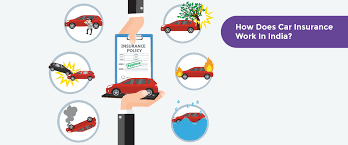In the vast realm of auto insurance, understanding the intricacies of premium factors is crucial for making informed decisions about coverage. Premium factors are the various elements that insurance companies consider when determining the cost of an insurance policy. This article will delve into the common and advanced premium factors, explore their impact, and shed light on the concepts of perplexity and burstiness in the auto insurance landscape.
I. Introduction
A. Definition of Premium Factors
To embark on this journey, it’s essential to define what premium factors are. These are the specific details about a policyholder that insurance companies analyze to calculate the cost of an auto insurance policy.
B. Importance of Understanding Premium Factors
Why does it matter? Understanding these factors is paramount as it empowers individuals to take control of their insurance costs, ensuring they get the coverage they need without breaking the bank.
II. Common Premium Factors
A. Driving Record
One of the primary factors insurers scrutinize is the driver’s record. A clean driving record can significantly reduce premiums, while accidents and traffic violations may lead to higher costs.
B. Vehicle Type
The type of vehicle being insured also plays a role. Luxury cars and high-performance vehicles often come with higher premiums due to increased repair costs.
C. Coverage Type
Different coverage types, such as liability, comprehensive, and collision, influence premiums differently. Understanding these options is crucial for tailoring coverage to individual needs.
D. Age and Gender
Age and gender are traditional factors that impact premiums. Younger drivers and males tend to face higher insurance costs due to perceived higher risk.
E. Location
The geographical location of the insured person matters. Urban areas with higher traffic density and crime rates often result in higher premiums.
III. Advanced Premium Factors
A. Credit Score
Believe it or not, credit scores can affect auto insurance premiums. Maintaining a good credit score can lead to lower insurance costs.
B. Marital Status
Married individuals often enjoy lower premiums, as statistics show they tend to be involved in fewer accidents than their single counterparts.
C. Deductibles and Limits
Choosing higher deductibles can lower premiums, but it’s crucial to strike a balance that aligns with one’s financial capacity.
D. Annual Mileage
The number of miles driven annually is a factor. Less time on the road may translate to lower premiums.
E. Safety Features
Cars equipped with advanced safety features, such as anti-lock brakes and airbags, often qualify for discounts.
IV. Impact of Premium Factors
A. Financial Consequences
Understanding the impact of these factors is vital, as insurance premiums directly affect one’s financial well-being. Unnecessary expenses can be avoided through informed decision-making.
B. Strategies for Lowering Premiums
Armed with knowledge about premium factors, individuals can employ strategies to lower their insurance costs. This includes maintaining a good driving record, choosing the right coverage, and leveraging available discounts.
V. Choosing the Right Coverage
A. Assessing Personal Needs
Every driver is unique, and so are their needs. Assessing personal requirements helps in customizing an insurance policy that provides adequate coverage without unnecessary costs.
B. Customizing Policies
Insurance policies are not one-size-fits-all. Tailoring coverage based on individual circumstances ensures optimal protection without overpaying.
VI. Perplexity in Auto Insurance
A. Understanding Perplexity
Perplexity refers to the complexity and unpredictability of auto insurance pricing models. Navigating through this complexity can be challenging, but it’s essential for making informed choices.
B. How Perplexity Affects Premiums
The intricate nature of auto insurance pricing models means that seemingly unrelated factors can impact premiums. Awareness of this perplexity is crucial to avoid unforeseen cost spikes.
VII. Burstiness in Auto Insurance
A. Defining Burstiness
Burstiness, in the context of auto insurance, refers to sudden spikes or fluctuations in premium costs. These can be triggered by unforeseen events or changes in personal circumstances.
B. Identifying Burstiness Factors
Recognizing the factors that contribute to burstiness is key to managing and mitigating its impact on insurance costs.
VIII. Balancing Perplexity and Burstiness
A. Achieving a Sweet Spot
Finding the right balance between perplexity and burstiness is an art. It involves staying informed about market trends, adjusting coverage as needed, and being proactive in managing premium factors.
B. Staying Informed
In the ever-evolving landscape of auto insurance, staying informed is a powerful tool. Regularly reviewing policies and keeping abreast of industry changes allows individuals to adapt and make decisions that align with their financial goals.
IX. The Future of Auto Insurance
A. Technological Advances
Advancements in technology, such as telematics and artificial intelligence, are shaping the future of auto insurance. These innovations may bring about new premium factors and pricing models.
B. Changing Landscape
The auto insurance landscape is dynamic, with regulatory changes, market trends, and technological developments influencing the industry. Adapting to these changes will be essential for individuals seeking optimal coverage at reasonable costs.
X. Conclusion
In conclusion, navigating the complexities of premium factors in auto insurance requires a blend of knowledge, awareness, and adaptability. Understanding both perplexity and burstiness empowers individuals to make informed decisions, ensuring they are adequately covered without overpaying for insurance. As the auto insurance landscape evolves, staying informed and proactive will be the keys to securing the best possible coverage.
FAQs
- Q: How can I lower my auto insurance premiums?
A: Maintaining a clean driving record, choosing higher deductibles, and leveraging available discounts are effective ways to lower auto insurance premiums.
- Q: Do credit scores really affect auto insurance costs?
A: Yes, insurance companies
